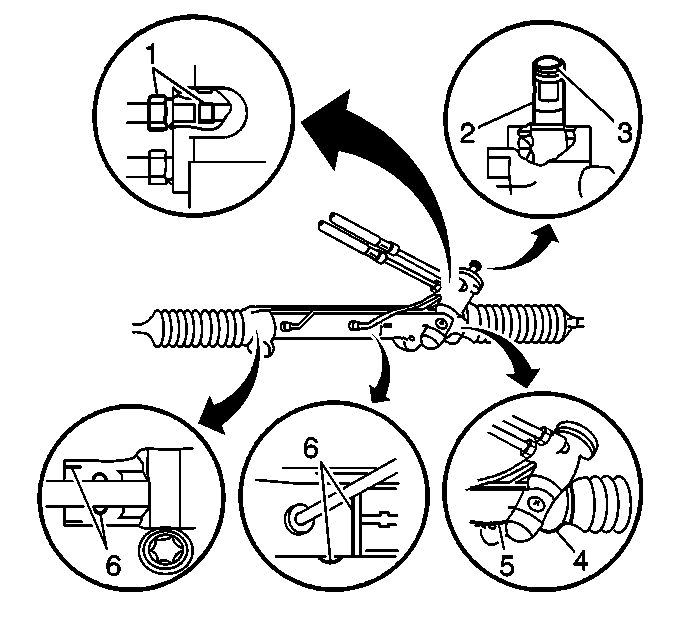Symptoms
The following symptoms may indicate that the power steering system is
leaking:
| • | Fluid leakage is on the floor. |
| • | Fluid leaks are visible on the steering gear or the pump. |
| • | A growling noise is heard either during parking or while the engine
is cold. |
| • | Power steering is lost during parking. |
| • | Steering effort is heavy. |
Inspection Procedure
Complete the following steps in order to inspect the power steering
system for an external leak:
- Wipe the suspected area dry.
- Inspect the reservoir for overfill.
- Inspect the power steering system for the following conditions:
| • | Power steering fluid aeration |
- Inspect the following components. Replace or tighten the components
as needed:
- Verify the exact point of the leakage. The point from which the
fluid is dripping may be different from the point where the system is leaking.
Complete the following steps in order to locate any seepage-type leaks:
| 5.1. | Turn the engine to the OFF position. |
| 5.2. | Wipe the entire power steering system dry. |
| 5.3. | Inspect the pump reservoir fluid level. |
Add fluid as needed.
| | Important: Do not hold the steering wheel at a stop for any length of time. Damage
to the power steering pump may result.
|
| 5.5. | Turn the steering wheel from stop to stop several times, with the aid
of an assistant. |
| 5.6. | Perform the Rack and Pinion Leak Diagnosis in order to locate
and repair the exact area of the leak. |
- Complete the following steps when service is required:
| 6.1. | Clean the leakage area prior to the disassembly procedure. |
| 6.2. | Replace the leaking seal. |
| 6.3. | Inspect the component sealing surfaces for damage. |
| 6.4. | Tighten the bolts to specification. |
Refer to
Power Steering System Bleeding
.
Diagnostic Procedure

Notice: Use the correct fastener in the correct location. Replacement fasteners
must be the correct part number for that application. Fasteners requiring
replacement or fasteners requiring the use of thread locking compound or sealant
are identified in the service procedure. Do not use paints, lubricants, or
corrosion inhibitors on fasteners or fastener joint surfaces unless specified.
These coatings affect fastener torque and joint clamping force and may damage
the fastener. Use the correct tightening sequence and specifications when
installing fasteners in order to avoid damage to parts and systems.
- Install the fitting.
Tighten
Tighten the fitting to 27 N·m (20 lb ft).
- If the system continues to leak, complete the following steps:
| 2.1. | Replace the O-ring seal. |
| 2.2. | If the leakage is due to damaged threads, repair the fitting nut
or replace the line. |
| 2.3. | If the housing threads are badly damaged, replace the housing. |
- Replace the following components:
| 3.2. | The stub shaft seals |
- Perform a partial gear replacement if any of the following conditions
exist:
| • | A leak is present between the torsion bar and the stub shaft. |
| • | A leak is present at the drivers side. The direction of the turn
does not affect the leak. |
| • | A leak is present at the housing end. The leak spurts when the
wheel is bottomed in a left turn. |
| • | A leak is present at the passenger side. |

